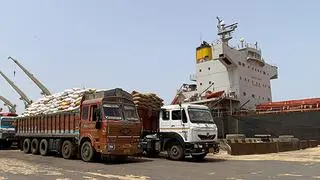In January 2019, the RBI cautioned that the Pradhan Mantri Mudra Yojana, dubbed as the biggest employment creator and having generated ₹11,000 crore NPAs, could upset the credit market severely. There isn’t enough information on MUDRA processes. There is also a persistent insistence on collateral, despite non-collateralised lending being backed by counter-guarantee.
The information on mudra.org.in reveals that at the end of March 2019, total disbursements under PMMY stood at ₹2.83 lakh crore in FY2018. Out of this, 40 per cent were disbursed to women entrepreneurs and 33 per cent to social categories. More than 5 crore micro borrowers have benefited through PMMY during the year FY2018-19.
FAQs on MUDRA (Micro Units Development and Refinance Agency) from 2016 reveal that it refinances all lending to the last-mile lenders — PSBs, private banks, scheduled cooperative banks, NBFCs and MFIs starting at ₹50,000 to ₹10 lakh per borrower, conforming to KYC.
All these loans are non-collateralised and guaranteed by the Credit Guarantee Fund Trust for Micro and Small Enterprises (CGTMSE). Manufacturing, transport, retail and services sectors are eligible categories.
Except United Bank of India, none had data on total number of loan proposals received under MUDRA. Yet, all banks claim to be tech-savvy! It is not surprising that SBI post-merger should account for 25 per cent of MUDRA loans. But studies reveal that several borrowers or enterprises are not traceable.
KYC and due diligence would appear to be the severe casualties. While the share of manufacturing in MUDRA could not be discerned from the website, studies reveal that they are a small fraction.
Some bankers responded saying that credit to manufacturing requires supervision for which they are not equipped. On the other hand, sanctions for retail sector online are quite easy.
The Monetary Policy Committee expressed concern that while the overall credit scenario is positive, credit to manufacturing micro and small enterprises poses still a major concern.
Banks say that CGTMSE is no big attraction to lend to the manufacturing MSEs even in the backdrop of the rise in guarantee threshold from ₹100 to ₹200 lakh. High premium and delayed claim settlements are still a concern for banks. So they continue to insist on collaterals. The RBI regulations seem to favour only collateralised loans to the MSE borrowers, as they do not follow the going-concern concept followed in the case of large borrowers coming under the IBC code.
The RBI guidelines of January 2019 on one-time restructuring for MSMEs up to ₹25 crore outstanding loans is a positive move. But it remains to be seen whether the banks would provide this reprieve in a non-discriminatory way.
The present pattern of lending to MSEs in manufacturing should be reviewed if the RBI and government are serious about enhancing credit to MSME segment. Make in India can succeed only when a strong vendor base is set up in MSME space.
There is another troublesome issue. The gap between the date of closure and delivery of loan documents is not instantaneous like that of gold loans. Banks take unduly long time for delivery of documents in most cases while in several others they say that the original documents are missing. This was not the case when the documents were being held by the sanctioning and disbursing branch. Loans were being better monitored and supervised.
The writer is Adviser, Government of Telangana, and risk Management specialist.








Comments
Comments have to be in English, and in full sentences. They cannot be abusive or personal. Please abide by our community guidelines for posting your comments.
We have migrated to a new commenting platform. If you are already a registered user of TheHindu Businessline and logged in, you may continue to engage with our articles. If you do not have an account please register and login to post comments. Users can access their older comments by logging into their accounts on Vuukle.